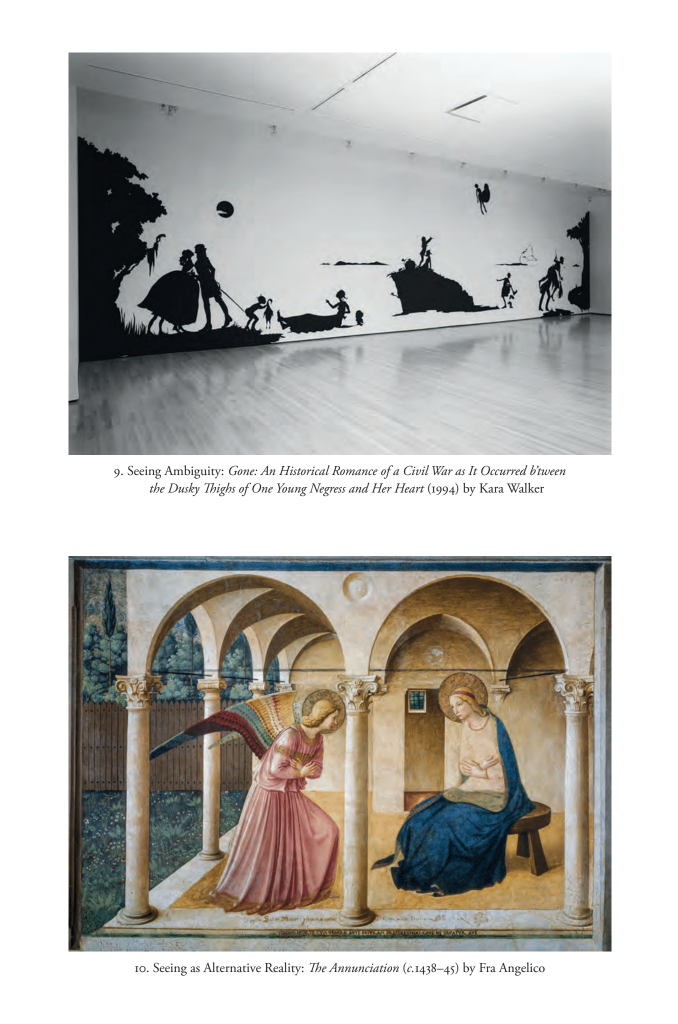The Art of Science—Versailles at the Science Museum, London
Have you ever wondered how it would feel to witness the grandeur and opulence of the 18th-century French court? Then you might want to go to London.
Edoardo Cesarino 19 December 2024
See What You’re Missing: New Ways of Looking at the World Through Art, a new book by UK art expert and former Tate director Will Gompertz, purports to help us see the way artists do. Its 31 short, stand-alone chapters each focus on a single artist and aim to provide insights into that artist’s unique perspective.
For the artists who genuinely have characteristic ways of seeing or at least interpreting what they see, the premise works rather well. These include Cezanne—whose influential approach to seeing from multiple viewpoints made him a particularly good fit – but also James Turrell, and Alice Neel, among others. There were also some artists whose methods or philosophies don’t strictly relate to seeing but are plenty interesting enough to merit reading about. Examples include Lynette Yiadom-Boakye and Kara Walker, whose unique approaches are characterized under the headings “Seeing Strangers” and “Seeing Ambiguity”. As in the case of the Rubens chapter titled “Seeing Politically”, however, not every way of seeing was all that unique.

See What You’re Missing: New Ways of Looking at the World Through Art, by Will Gompertz, book cover, Penguin UK, 2022. Courtesy of the publisher.
Gompertz is clearly knowledgeable about a wide variety of artists from ancient to contemporary. The information he provides in each chapter tends to be quite interesting, regardless of whether it fits his theme or not. The book is easy to read and straightforward to understand. I can see why the accolades at the back of the book tout his ability to explain difficult concepts straightforwardly. The book also deserves kudos for including so many female artists – almost half of the total selection. However, I didn’t love how their biographies were often mined for personal drama in a way the male artists’ weren’t.
In many chapters, Gompertz has to stretch both the idea of “seeing” and the artists’ characteristics pretty far to justify some of his inclusions. For example, I’m still not sure what it means to “see[ing] in cycles” or how that relates to the art of Cy Twombly besides the fact that some of his artworks include circular motions and he painted the four seasons. In some cases, only a few sentences at the beginning and end of a chapter address this idea of seeing. It seems as though the book’s organizing principle was grafted onto unrelated material after it was written. Many chapters seemed to need extensive digressions to hold them together, despite being only about ten pages each.
The book also doesn’t say much that’s new. By suggesting that Edward Hopper thrived on solitude, Rembrandt made himself a prime subject of observation, or Tracey Emin‘s art shares intimate details of her life, See What You’re Missing isn’t making any points you couldn’t learn from introductory texts. In my opinion, it is definitely not among the more original or thought-provoking art books currently on offer.

See What You’re Missing: New Ways of Looking at the World Through Art, by Will Gompertz, sample page, Penguin UK, 2022. Courtesy of the publisher.
To be fair, it’s quite likely that the problems are not entirely on Gompertz’s end. I am interested in the idea of “ways of seeing” in a fairly literal sense. The title, promotional materials, and introduction all suggested the book would take that approach, which is the major reason I chose it to review. Therefore, it’s no surprise that I reacted best to the chapters that addressed seeing in the conventional sense and struggled with those that used the idea more figuratively. Readers not burdened by these expectations will likely enjoy this book much more and find its arguments more persuasive. See What You’re Missing is certainly not a bad book by any stretch of the imagination; it simply was not a good fit for me but very well may be for others.
See What You’re Missing: New Ways of Looking at the World Through Art was released by Penguin and Simon & Schuster on April 4, 2023. It is available from book retailers like Amazon and Barnes and Noble.

See What You’re Missing: New Ways of Looking at the World Through Art, by Will Gompertz, sample page, Penguin UK, 2022. Courtesy of the publisher.
DailyArt Magazine needs your support. Every contribution, however big or small, is very valuable for our future. Thanks to it, we will be able to sustain and grow the Magazine. Thank you for your help!